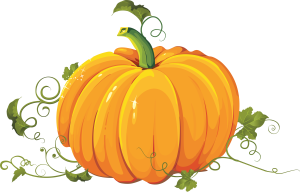Moving from Dublin city to the countryside to start a more sustainable life as well as an animal sanctuary has been an adventure and one that has been full of challenges. This new series will detail growing your own food, restoring an old house and caring for animals.
As we’re almost halfway to pumpkin season and Halloween, today’s focus is on growing pumpkins. Now is the time to plant pumpkin seeds if you’re hoping for gorgeous gourds in October. It is no secret that I’m obsessed with pumpkins, I use them for decor, baking, food for us and the animals, my peace and composting. We still have a few pumpkins from our Samhain harvest and they are the pigs’ favourite snack.
After many unsuccessful attempts at pumpkin growing, last year we had our first pumpkin harvest and it was magical. This year I’m hoping to grow different varieties of pumpkins to accompany my Halloween beauties.
There are a few things to know about pumpkin growing before starting, firstly, they need plenty of space and at least 2-2.5 metres needs to be left between each plant in the ground. Secondly, you may need to help pollinate the flowers, pumpkins produce both male and female flowers and helping them pollinate will result in a successful harvest.
All of the vegetables that we grow are done so organically, we do not use any chemicals or sprays. The below guide to pumpkin growing is aimed at the novice grower like me and to help avoid the mistakes I previously made. Here are my tips for starting:

Sew seeds by the end of April /start of May at the latest. I buy my seeds from The Organic Centre and Seed Savers. You can save the pumpkin seeds from your harvested pumpkins and use them for next year’s crop.

Sew them in small pots or seed trays no more 1.5cm deep and keep them warm and in a bright sunny space until they are ready to be planted in the ground. If it gets a bit cold wrap them in some fleece.

Towards the end of May/beginning of June, you will have a pumpkin plant that can be moved to the ground, I usually prepare my soil well with plenty of natural fertiliser (thanks to the donkeys and Philippe’s poop). Leave plenty of space in between each plant as the vines can grow very large, last year they took over a small fruit tree and a few cabbages.

As the plants start to grow outside you will notice that they form orange flowers. This is when you’ll start pollinating, the bees will do a lot of this work naturally for you but it is best to give a helping hand to make sure you have lots of lovely orange beauties by the time Halloween arrives. This is easy to do and you can use a small paint brush or your finger. Gently rub the pollen in the male flower and place it in the centre of the female flower. You’ll be able to tell the difference between the flowers as the females have a bulb shape at the bottom.

Pumpkins often form a white marking on their leaves called powedery mildew. We were worried last year when we saw our leaves become covered in it but we were able to treat the mildew with neem oil which is an organic solution.

When your pumpkins start to grow, they will be green and will turn orange close to harvest time. It is important to delicately rotate your pumpkin in the sunlight so the full fruit turns orange. Pumpkins are sensitive to the weather so if there is an early frost, you will need to harvest your pumpkins and bring them inside to ripen. Leaving them in a sunny window will turn them orange.

To harvest your pumpkin, leave a good bit of stalk attached and cut from the vine. You can leave your pumpkin for 10-14 days before using.
Happy pumpkin growing.


